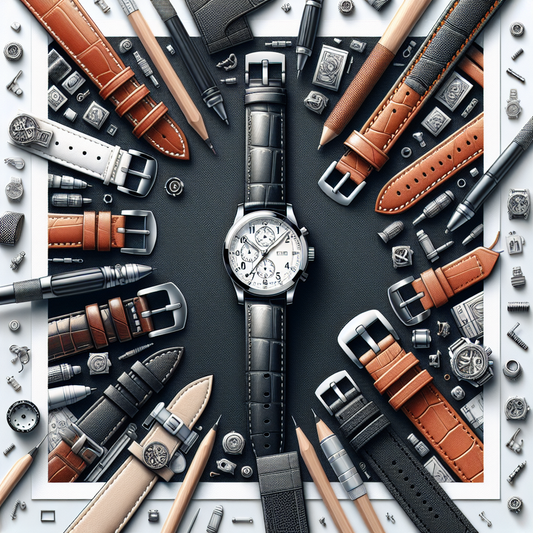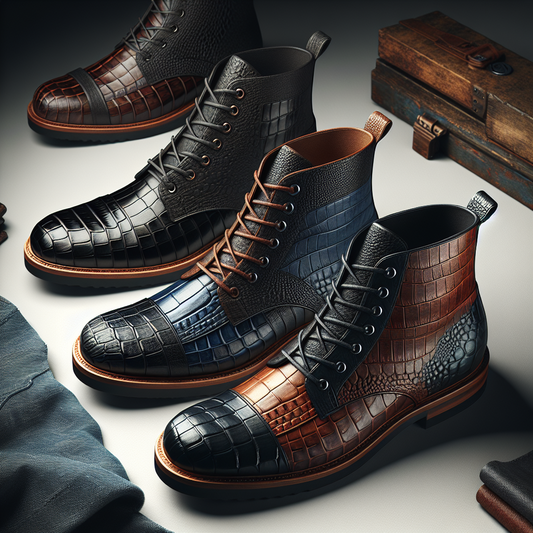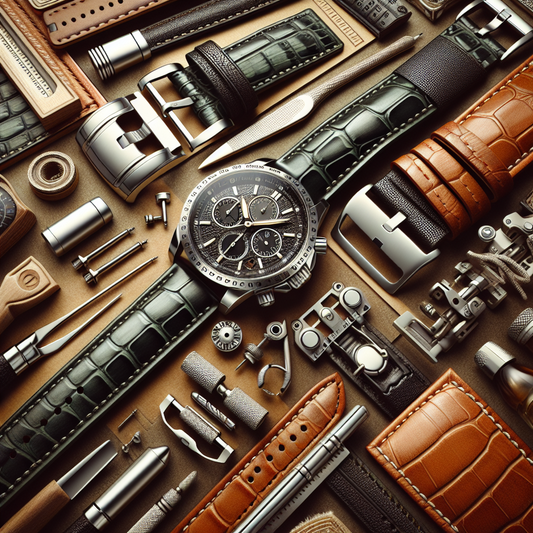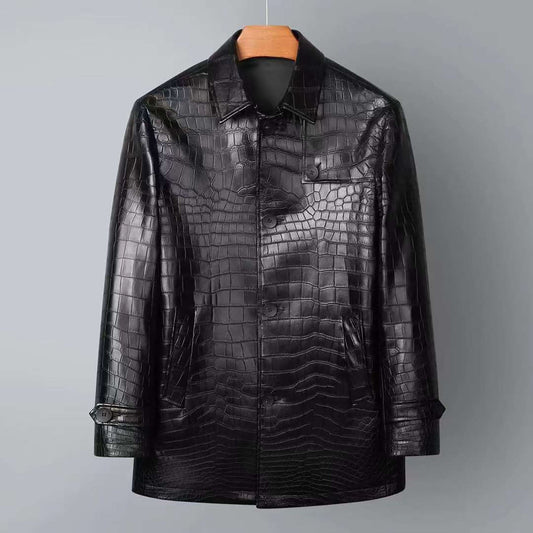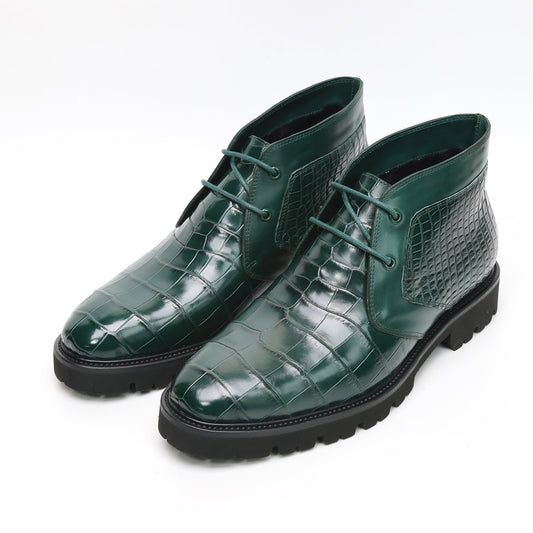Elevate Your Shoe Game: The Art of Leather Patina
In the ever-evolving world of fashion, the art of leather patina has emerged as a captivating way to add depth, character, and a touch of timeless elegance to your footwear. Patina, a natural process that occurs when leather is exposed to the elements, can transform a simple pair of shoes into a unique, one-of-a-kind masterpiece. Whether you're a seasoned shoe enthusiast or just starting to explore the world of leather craftsmanship, mastering the art of patina can elevate your style and set your footwear apart from the crowd.
Understanding Leather Patina
Patina is the subtle, yet striking, transformation that occurs on the surface of leather over time. As leather is exposed to sunlight, moisture, and the natural oils of your skin, it develops a rich, multi-layered appearance that can range from warm, burnished tones to deep, antique-inspired hues. This natural process not only adds character to your shoes but also enhances their durability and longevity.
There are two main types of patina: natural and artificial. Natural patina develops organically as your shoes are worn and exposed to the elements, while artificial patina is a technique that allows you to create a similar effect through the intentional application of various treatments and finishes.
When it comes to leather suitable for patina, full-grain and top-grain leathers are the most responsive to this process. These high-quality leathers have a natural texture and grain that allows the patina to develop in a unique and visually appealing way.
Preparation for Patina
Before you begin the patina process, it's essential to properly prepare your leather shoes. Start by thoroughly cleaning the surface, removing any dirt, oils, or previous finishes that may interfere with the patina development. Use a gentle leather cleaner and a soft cloth to ensure the surface is clean and ready for the next steps.
Gather the necessary materials and tools, which may include leather dyes, waxes, solvents, and various applicators like sponges, brushes, and rags. Ensure you have a well-ventilated workspace and follow all safety precautions when working with chemicals.
Basic Patina Techniques
There are several techniques you can use to create a beautiful patina on your leather shoes. Let's explore some of the most popular methods:
Burnishing Method
The burnishing method involves gently rubbing the leather with a soft cloth or your fingers to create a subtle, polished patina. This technique works best on smooth, high-quality leathers and can be used to enhance the natural grain and texture of the material.
Layering Method
The layering method involves applying multiple layers of dye, wax, or other finishing products to build up a rich, multi-tonal patina. Start with a base color, then gradually add layers of different shades and finishes to create depth and complexity.
Antiquing Method
The antiquing method involves deliberately distressing the leather to create a worn, vintage-inspired look. This can be achieved by using sandpaper, steel wool, or other abrasive materials to gently rub away the surface of the leather in strategic areas, revealing the underlying tones and creating a unique, aged appearance.
Advanced Patina Techniques
As you become more comfortable with the basic patina techniques, you can explore more advanced methods to create truly unique and eye-catching leather shoes.
Two-Tone Patina
The two-tone patina technique involves applying two contrasting colors to the leather, creating a striking and visually interesting effect. This can be achieved by masking off certain areas before applying the dyes or by strategically layering the colors.
Ombré Effect
The ombré effect is a gradual transition from one color to another, creating a soft, blended appearance. This can be accomplished by carefully applying and blending different shades of dye or by using a sponge or brush to create a seamless gradient.
Marbled Patina
The marbled patina technique involves creating a unique, swirling pattern on the leather by applying multiple colors and then manipulating them with various tools and techniques. This can result in a truly one-of-a-kind, abstract finish that adds an artistic flair to your shoes.
Step-by-Step Guide to Creating a Patina
Now that you've explored the different patina techniques, let's dive into a step-by-step guide to help you create your own unique leather patina.
- Applying the Base Color: Start by applying a base color to your leather shoes. This can be a solid, even tone or a more muted, vintage-inspired hue. Allow the base color to fully dry before moving on to the next step.
- Building Layers: Begin adding layers of dye, wax, or other finishing products to create depth and complexity. Experiment with different application methods, such as sponging, brushing, or stippling, to achieve the desired effect.
- Adding Depth and Dimension: Use techniques like burnishing, distressing, or sponging to add depth and dimension to your patina. This will help create the illusion of age and wear, making your shoes truly one-of-a-kind.
- Finishing Touches: Once you're satisfied with the overall patina, apply a protective sealant or wax to help preserve the finish and protect the leather from future wear and tear.
Care and Maintenance of Patinated Shoes
Proper care and maintenance are essential to keeping your patinated leather shoes looking their best. Regularly clean the shoes with a gentle leather cleaner, using a soft cloth or brush to avoid disrupting the patina. When necessary, apply a leather conditioner to help nourish and protect the material.
To prevent the patina from fading or becoming uneven, avoid exposing your shoes to direct sunlight or excessive moisture. Store them in a cool, dry place when not in use, and consider using shoe trees to help maintain their shape.
Troubleshooting Common Issues
As you experiment with patina, you may encounter a few common challenges. Here are some tips to help you troubleshoot:
- Uneven Coloration: If the patina appears uneven or blotchy, try gently buffing the surface with a soft cloth or sponge to blend the colors more seamlessly.
- Patina Fading: If the patina starts to fade over time, reapply a thin layer of dye or wax to refresh the finish.
- Color Bleeding: If the colors in your patina start to bleed or run, try using a sealant or wax to lock in the finish and prevent further bleeding.
Showcasing Patina Styles
The beauty of leather patina is that it allows you to create a truly unique and personal style for your shoes. From classic, understated patinas to bold, artistic designs, the possibilities are endless.
Embrace the natural variations and imperfections that come with patina, as they are what make each pair of shoes truly one-of-a-kind. Experiment with different techniques and materials to find the patina style that best reflects your personal aesthetic and complements your wardrobe.
Conclusion
Mastering the art of leather patina is a journey of discovery, creativity, and patience. By understanding the process, experimenting with various techniques, and caring for your patinated shoes, you can elevate your footwear game and create a truly unique and personalized style.
So, grab your leather shoes, gather your materials, and embark on a patina adventure. Embrace the beauty of the natural aging process and let your creativity shine through. With a little practice and a lot of passion, you'll be well on your way to crafting a collection of patinated leather shoes that will turn heads and inspire envy wherever you go.



